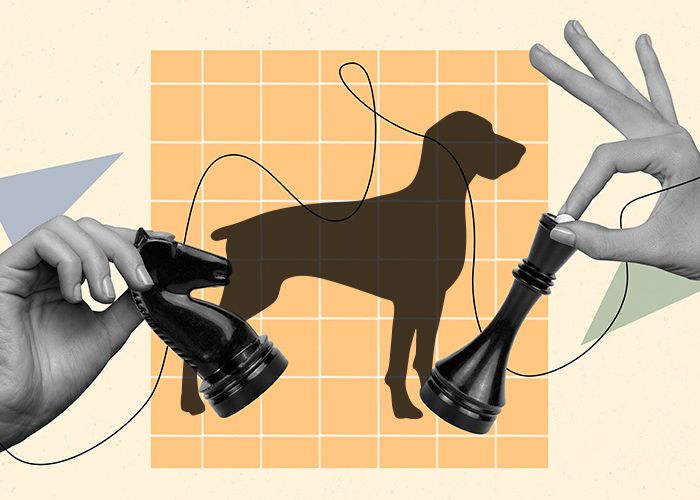

The Importance of Preventive Care Screening for Young Adult Pets
Preventive care is the cornerstone of veterinary medicine, and diagnostic screening plays a pivotal role in ensuring the long-term health of our patients. While most veterinarians are familiar with the need for preventive care across all life stages, the importance of diagnostic screening for young adult pets often remains underemphasized. For many, this age group—typically defined as 1 to 6 years for both cats and dogs—is seen as a low-risk population because these pets are generally healthy and show few outward signs of illness. However, early detection of underlying conditions can make a significant difference in their long-term well-being.
According to data from IDEXX's preventive care studies, even young pets that appear perfectly healthy may harbor early-stage diseases or conditions that could go unnoticed without proper screening. Here, we'll explore why young adulthood is a critical time for diagnostic testing, how it can establish a valuable baseline for the future, and why a proactive, patient-specific approach is essential for effective long-term care.
Young Adulthood Is A Crucial Window for Early Detection
Young adulthood marks a pivotal phase in a pet's life. At this stage, they have typically moved past the more vulnerable juvenile phase and into what is often regarded as their healthiest years. However, just because a pet looks and acts healthy doesn't mean they are free from potential underlying issues. Early kidney disease, liver dysfunction, or electrolyte imbalances may not manifest clinically but could be detected through routine bloodwork and urine tests.
A study conducted by IDEXX underscores this point: 1 in 7 young adult pets, both dogs and cats, show clinically significant abnormalities during routine diagnostic screening, even in the absence of symptoms. This finding challenges the common perception that young, asymptomatic pets don't require regular testing. By identifying these abnormalities early, veterinarians have the opportunity to intervene and manage potential health issues before they become more severe or harder to treat.
The early detection of diseases is especially crucial in conditions where progression is gradual. For example, chronic kidney disease in cats may remain subclinical for years, but if caught in the early stages through diagnostic screening, interventions such as dietary changes and hydration support can be implemented to slow its progression.
Establishing a Baseline for Lifelong Monitoring
Diagnostic screening in young adult pets isn't just about detecting current issues—it also plays an essential role in establishing a health baseline. Key health metrics, such as liver and kidney function, electrolyte balance, and blood glucose baseline readings provide a valuable reference point for future comparisons, allowing us to monitor trends as the pet ages. By having a clear picture of what is "normal" for an individual pet during their young adult years, we can detect deviations from this norm more quickly and accurately. This allows for earlier diagnosis and treatment, significantly improving the pet's long-term prognosis.
In fact, IDEXX data reveals that early intervention based on diagnostic screening leads to improved health outcomes and lower overall treatment costs in the long run. Catching diseases before they become symptomatic not only enhances the quality of life for the pet but also prevents more costly and invasive treatments that may be required for advanced-stage diseases. For pet owners, this can also strengthen their trust in us as veterinarians, as they see the tangible benefits of proactive care.
No Clinically Significant Findings Mean a Positive Outcome for Young Pets
For many young adult pets, diagnostic screenings will yield no significant clinical findings—and this is an excellent outcome. While some may view negative test results as unnecessary or a sign the screening wasn't needed, these results are, in fact, valuable. First, they confirm the pet is currently in good health, and they provide a solid foundation for ongoing monitoring. This is positive news that should be shared with the client as such. By establishing a baseline and continuing with annual screenings, we can track subtle changes over time that might signal the early onset of disease, even in the absence of clinical symptoms.
The IDEXX study found that among the young adult pets screened, even those with no current clinical findings showed trends over time that indicated the eventual onset of disease. For example, slight fluctuations in kidney values or liver enzyme levels may not be significant in a single test but could become meaningful when compared over time. Annual screenings enable us to monitor these trends.
A Patient-Specific Approach
Every pet is unique, and their care should be tailored to their individual needs. Diagnostic screening plays a crucial role in this patient-specific approach. By regularly screening young adult pets, we can better understand the unique physiology of each animal and develop personalized preventive care plans. Some pets may have predispositions to certain conditions due to their breed, lifestyle, or genetic factors, and diagnostic testing can help identify changes in health parameters associated with these risks factors.
For instance, certain breeds of dogs are more prone to conditions such as hypothyroidism. Utilizing diagnostic screening tests in conjunction with the pet's history in these breeds during their young adult years allows us to detect problems before they manifest clinically. Similarly, indoor cats may be more prone to obesity and diabetes, so monitoring blood glucose levels and weight trends can help guide pet owners toward lifestyle modifications early on.
In addition, patient-specific care plans build stronger client relationships. When pet owners see the customized attention their pet receives, they are more likely to invest in veterinary preventive care and adhere to long-term treatment plans.
Diagnostic screening is not just for sick or senior pets—it's a valuable component of preventive care for young adults as well. Early detection and the value of establishing a health baseline during a pet's young adult years have lasting impacts on a pet's health. By incorporating regular diagnostic tests into the care of young adult pets, we can identify potential issues early, track health trends over time, and provide patient-specific care that enhances the pet's quality of life. In doing so, we can ensure their patients not only live longer but healthier lives.







